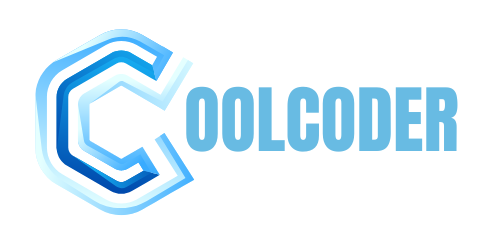Introduction
The SAP FICO (Financial Accounting and Controlling) module is an essential part of SAP ERP systems, designed to manage an organization’s financial processes efficiently. It integrates various financial transactions, ensuring accurate financial reporting and effective cost management. SAP FICO enables real-time financial data updates, multi-currency handling, and seamless integration with other SAP modules, making it a vital tool for businesses aiming to enhance financial transparency and control. Aspiring professionals can check the SAP FICO Course Fees and join a training program for the best guidance.
Important Features Of The SAP FICO Module
The SAP FICO (Financial Accounting and Controlling) module is a critical component of SAP ERP systems, providing comprehensive financial management solutions. It integrates various financial processes essential for managing financial transactions and reporting within an organization.
Here are the important features of the SAP Fico Module:
1. Financial Accounting (FI) Features:
General Ledger Accounting:
- Unified Chart of Accounts: Allows organizations to manage their financial accounts and maintain an accurate and consistent record of financial transactions.
- Real-time Integration: Ensures that financial data is updated in real-time across various business processes.
- Multi-currency Handling: Supports transactions in multiple currencies, crucial for global businesses.
Accounts Receivable (AR):
- Customer Master Data: Maintains comprehensive information about customers.
- Invoice Processing: Facilitates the creation, processing, and management of customer invoices.
- Dunning: Automates the process of sending reminders to customers for overdue payments.
Accounts Payable (AP):
- Vendor Master Data: Stores detailed information about vendors.
- Invoice Verification: Ensures that invoices are accurate and match purchase orders and goods receipts.
- Payment Processing: Manages the scheduling and execution of payments to vendors.
Asset Accounting:
- Asset Master Data: Records information about fixed assets.
- Depreciation Calculation: Automates the calculation and posting of asset depreciation.
- Asset Tracking: Monitors asset transactions, transfers, and retirements.
Bank Accounting:
- Bank Master Data: Manages details of all banking relationships.
- Cash Management: Provides tools for managing cash flow and liquidity.
- Bank Reconciliation: Automates the reconciliation of bank statements with internal records.
Consolidation:
- Group Reporting: Enables the consolidation of financial statements from different entities within a group.
- Intercompany Transactions: Manages and eliminates intercompany transactions for accurate consolidated financial statements.
2. Controlling (CO) Features:
Cost Element Accounting:
- Cost Elements: Tracks all costs and revenues as they flow through the organization.
- Primary and Secondary Cost Elements: Differentiates between costs related to external transactions and internal allocations.
Cost Center Accounting:
- Cost Center Hierarchy: Organizes cost centers into hierarchical structures for better management and reporting.
- Budgeting and Planning: Supports budgeting processes and variance analysis.
Internal Orders:
- Order Management: Allows the tracking of costs for specific internal projects or orders.
- Order Settlement: Ensures that costs are allocated to appropriate cost centers or profit centers.
Activity-Based Costing (ABC):
- Activity Types: Identifies and assigns costs to activities based on their usage of resources.
- Cost Allocation: Provides a more accurate method of allocating costs to products or services.
Profit Center Accounting:
- Profit Center Hierarchy: Structures profit centers for detailed profitability analysis.
- Segment Reporting: Allows analysis of financial performance by segments, such as product lines or geographic areas.
Product Costing:
- Costing Methods: Supports various costing methods like standard costing and actual costing.
- Cost Estimates: Provides detailed cost estimates for products, including material, labor, and overhead costs.
Profitability Analysis (CO-PA):
- Market Segmentation: Analyzes profitability by various segments, such as customers, products, and regions.
- Contribution Margin Reporting: Provides detailed reports on contribution margins and profitability. The SAP FICO Course Fees are nominal and offers the best guidance in this field.
3. Integration with Other Modules:
- Material Management (MM): Integrates with MM for seamless procurement and inventory management processes.
- Sales and Distribution (SD): Links with SD to manage the financial impact of sales activities.
- Production Planning (PP): Connects with PP to track the costs associated with production processes.
- Human Capital Management (HCM): Integrates with HCM for payroll processing and employee expense management.
4. Reporting and Analytics:
- Financial Statements: Generates comprehensive financial statements, including balance sheets, profit and loss statements, and cash flow statements.
- Custom Reports: Allows customization of reports to meet specific business needs.
- Real-time Reporting: Provides real-time insights into financial performance through dashboards and analytical tools.
5. Compliance and Control:
- Audit Trails: Maintains detailed records of all financial transactions for auditing purposes.
- Regulatory Compliance: Ensures compliance with various regulatory requirements, such as IFRS and GAAP.
- Internal Controls: Implements controls to prevent fraud and ensure the accuracy of financial data.
Conclusion
The Sap Fico Module is a comprehensive solution for managing an organization’s financial and controlling processes. It provides robust features that support financial accounting, cost management, profitability analysis, and integration with other SAP modules. By leveraging SAP FICO, organizations can achieve accurate financial reporting, effective cost control, and enhanced decision-making capabilities.




For the reason that the admin of this site is working, no uncertainty very quickly it will be renowned, due to its quality contents.
For the reason that the admin of this site is working, no uncertainty very quickly it will be renowned, due to its quality contents.
Pretty! This has been a really wonderful post. Many thanks for providing these details.
I like the efforts you have put in this, regards for all the great content.